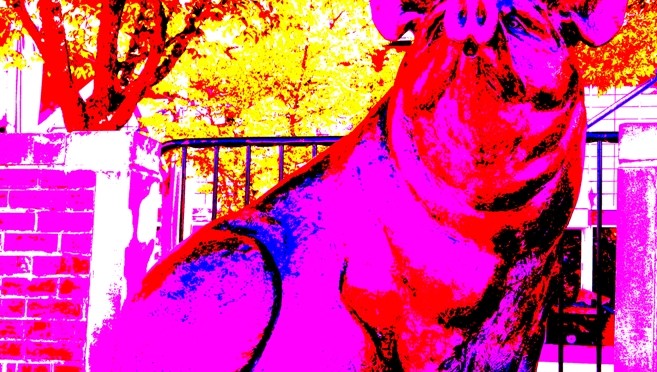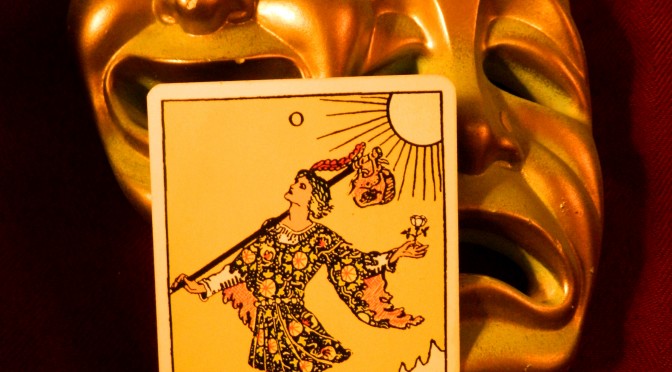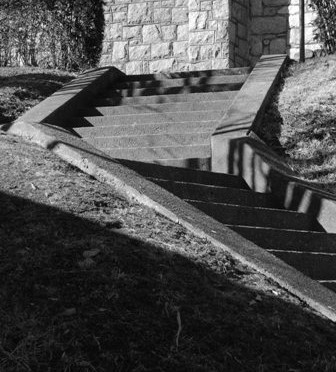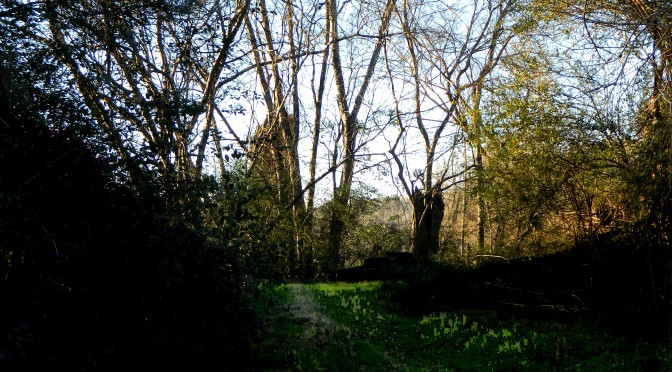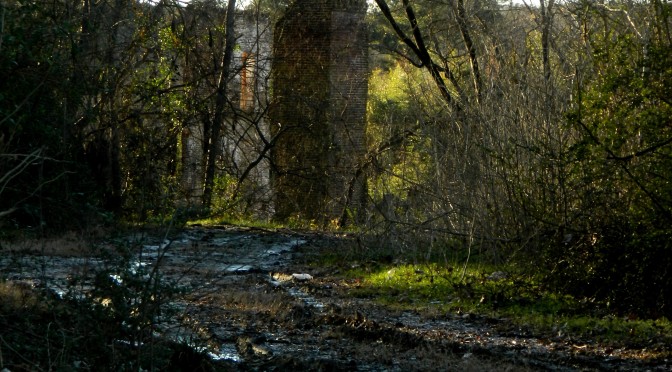So, I’ve been back in Manhattan and having a ball, seeing old friends, catching a really wonderful show (“The Visit” — more on that one in another post), having a couple of business meetings, seeing some great art, doing research, taking a class or two, and buying books to use in our foundation’s classes. Oh, for me, this is heavenly stuff!
Tag Archives: educational approaches
Wild Beasts at Work
“The artist should call forth all his energy, his sincerity, and his greatest possible modesty in order to push aside during his work the old clichés that come so ready to his hand and can suffocate the small flower that itself never turns out as one expected.”
— Henri Matisse1
Isn’t it wonderful how things sometimes “line up”? I’ve been thinking a lot lately about the mission and activities of The Earl Wentz and William Watkins Foundation, how to explain succinctly our educational approaches, and what our next steps will be. Right now, of course, our Summer Musical Theatre Workshop looms large on the horizon. But then there are the other initiatives on the schedule, too, including performances of some of Earl Wentz’s musical works.
How to do it all? How to gain additional support beyond what the foundation can contribute from its own resources? How to keep growing and not just repeating what we already know and have done? How to keep moving towards fulfilling our goals?
I get restless as I ponder and so I roam.
And it works. For me.
In the last week, I’ve visited the fabulous new Crystal Bridges Museum of Art in Arkansas, seen architect Fay Jones’s stirring masterpiece Thorncrown Chapel, hiked over rushing river waters via marvels of engineering, and just today attended an exhibition of the art books of Henri Matisse at the Bechtler Museum of Modern Art.
A Bag of Tricks
Your growth as an artist and as a human being lies in the constant development of your instrument, which includes your instincts, your mind, and your storehouse of knowledge. It is a series of victories — sometimes small — over fears and doubts. Through practical 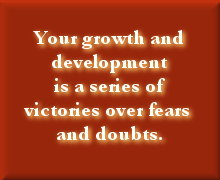 advancement and application (that is, by doing rather than talking or fretting about), it is the continual building up of that list of things that change from “I couldn’t possibly” to “yes, I can”. You might never be among the ranks of the great singers but, by gum, by taking it on, you will be better and not afraid to do it when the circumstances call for it. You will become better and better prepared, more directable, and more marketable.
advancement and application (that is, by doing rather than talking or fretting about), it is the continual building up of that list of things that change from “I couldn’t possibly” to “yes, I can”. You might never be among the ranks of the great singers but, by gum, by taking it on, you will be better and not afraid to do it when the circumstances call for it. You will become better and better prepared, more directable, and more marketable.
Where’s My Mind?
I’ve written a lot about critical thinking in the last few blog posts, partially because I believe it’s something that’s currently lacking to a great degree in our culture and particularly in the arts. In future blog posts, I’ll expand on this and explore the interplay of imagination and rational thinking.
As I have said previously, almost anyone could stand on the stage and “feel”. But could you do it again? You and I could scream our lungs out at each other. “Wow! I really felt that!” we might say afterwards, licking our chops like cats. But would it serve the play, be interesting and appropriate, or would it just be emotional masturbation? And again, could either of us do that again and again without very rapidly wrecking our voices?
In the end, who really cares if you “felt” it or not? The real test is: Were you able to convey across the footlights the impression that the character was feeling whatever emotion of the moment, by whatever path you took to get there?
Simple emotional indulgence is not only boring to watch, it’s a cheat. You might start by getting “feelings” but can you justify them after the fact?
Continue reading Where’s My Mind?
And Now . . . Keep Building The Approach
It’s so great to hear from all of you who have been following the blog and especially those of you who are trying the exercises in our last several posts (click here, and here to review those exercises or to do them now if you haven’t done so).
I know that this is new and strange territory for some of you and I admire your courage in challenging yourselves to try something different, to speak up when you don’t understand, and to just “go with it” and see where it takes you. Please keep doing all that and also submitting your comments on each post page or speaking to me “offline” or both!
If you do use the “comments” feature, it helps us all to see what others are grappling with or how they are approaching things. It’s amazing how alike we can be and really fun to explore our differences as well. I know that I learn a lot from seeing the various approaches that people take and where their imaginations lead. Your creativity helps me to be more creative and I hope you will find the same experience in sharing with others here.
I’ve stressed throughout these introductory exercises that there’s no “right” or “wrong” answers. The point is really to expand horizons. To let your imagination develop, partly through a “metaphorical” approach; that is, through using one creative or artistic medium to talk about another. In these cases, we’ve used light and shadow, color and tone, depth and angle, “inclusion” and “exclusion” — all found in photographs — to help us explore what stories interest us, how we might relate these stories as writers or directors, and why.
Further Towards A Multi-Disciplinary Approach
The photograph above, “Follow Me”, © 2015 by William B. Watkins, can be viewed in a larger format in the Image Gallery. On that page, just double-click on the image to view it in a large, slideshow mode.
As you know if you read the last blog entry, I waited to get a little more response from blog readers about the post “Towards a Multi-Disciplinary Approach” and the exercises in it before continuing on the subject.
While not completely unexpected, I have to admit that I was surprised at exactly how much confusion the exercises stirred up.
When I asked some specific people for feedback or about whether or not they had done the two short exercises in the post, the prevailing answers I got were along the lines of “I didn’t understand what I was supposed to do.” I asked if the directions were unclear, concerned that I had gone over people’s heads somehow. No, I was assured, they weren’t.
Hmmmmm . . . . I wondered what the problem was then. “I didn’t know what this was for,” someone said. “I wasn’t used to doing things that way,” said another. “I didn’t think I was smart enough,” a very bright person told me.
Continue reading Further Towards A Multi-Disciplinary Approach
Further Towards A Multi-Disciplinary Approach (New Exercises)
The photograph above, “To the Mill”, © 2015 by William B. Watkins, can be viewed in a larger format in the Image Gallery. On that page, just double-click on the image to view it in a large, slideshow mode.
Welome back!
I know that those first couple of exercises from our post “Towards a Multi-Disciplinary Approach” may have been challenging in many different ways. If you haven’t read that post or done the first two exercises, you really should take a step back and have a go at them before proceeding. You might also want to read some explanatory information from “Further Towards A Multi-Disciplinary Approach”.
Remember, these exercises are for you. There’s not a right or wrong answer. It’s all based on your choices and designed to help you get in touch with your instincts about what appeals to you the most and then to challenge yourself to explore — and articulate — why.
Continue reading Further Towards A Multi-Disciplinary Approach (New Exercises)
L’art Pour L’art
The photograph above, “Balance”, © 2015 by William B. Watkins, can be viewed in a larger format in the Chiaroscuro section of the Image Gallery. On that page, just double-click on the image to view it in a large, slideshow mode.
L’art pour l’art is a French phrase that translates to English as “Art for art[‘s sake]” and may be more familiar, particularly to movie aficionados, in its Latin rendering Ars gratia artis (more on that later).
However it’s presented, this is a mighty motto, noble in scope, affirming that art stands on its own, with its own intrinsic value. That is to say, “art” isn’t just a vehicle for sentimentality, religion, commerce, morals, or politics.
I doubt that this would have ever developed as anyone’s motto, though, had there not been a widespread conflict about the purpose of art to begin. Otherwise, why defend art’s higher end?
When I speak to college students, I often quote from a play that I first encountered as a young college student myself. The words were spoken by a powerful character in a generally cheerless play called Kennedy’s Children, written by Robert Patrick in the 1970s. At the top of Act II, the character Sparger, an actor, comes forward and finally begins to speak his truth, which begins (as he contemplates the room around him), “I used to know a place that was better . . . .” He continues to describe the wonderland he had stepped into years earlier, “a hole-in-the-wall West Village coffeehouse . . . . [where] We did plays. We — I was one of “us” . . . .
For the character, it was a life-changing experience the night as a young man he first encountered that place and it was holy ground that he spoke of:
Towards a Multi-Disciplinary Approach
One of the educational emphases of The Earl Wentz and William Watkins Foundation is “expanding the vision and abilities of young artists by encouraging them to learn about and experience a cross-section of artistic activities in disciplines outside their primary areas of interest”.
Using a multi-disciplinary approach helps us see and understand the world in more profound ways and, as artists, to make richer and more interesting choices in our expressive work.
Stories can be expressed artistically in many different ways, through many different disciplines. Describing the process, particularly as it relates to acting and directing, often is best done metaphorically. These metaphors can be gleaned from the various modes of expression of similar ideas by analyzing construction, composition, color, tone, etc.
To get you started….
Following are two exercises — taken from my forthcoming book Expansion: Toward a Multi-Disciplinary Approach to Creativity and Expression — that show how studying and experimenting with photography can be used in the dramatic arts. Exercise #1 introduces you to the approach. Exercise #2 applies it to the realm of the playwright or author.
Of Flower Girls and Ladies — Part II

Photo credit: William Watkins, 2014
In our post on November 22, 2014, “Of Flower Girls and Ladies — Part I”, we delved into a quote from George Bernard Shaw’s “Pygmalion”, spoken by the heroine, Eliza Doolittle:
“. . . the difference between a lady and a flower girl is not how she behaves, but how she’s treated. I shall always be a flower girl to Professor Higgins, because he always treats me as a flower girl, and always will; but I know I can be a lady to you, because you always treat me as a lady, and always will.”
We explored how this central theme played out in the characters’ behavior throughout the play (as well as in its musicalization, “My Fair Lady”) and its implications, once Eliza realizes the truth of it, particularly for her independence and for her future.
We left by asking how all of that relates to the work of The Earl Wentz and William Watkins Foundation. It’s there that we pick up today.
If you haven’t read Part I, you may want to do that by clicking on this link before reading on.
________________________________________________________________________
Despite a marvelously nuanced performance by Rex Harrison in both the stage and film versions of My Fair Lady, where we see the heart of Henry Higgins start to melt before our eyes and thereby transform the exterior blustering beast as Higgins realizes that much to his consternation, he has “grown accustomed to” Eliza’s face, this Higgins is not that of Pygmalion either. Higgins arrogantly proclaims in the musical that he has made a woman of Eliza, but it is she who has actually made a grown man of him. It’s utterly charming here and delicious fodder for those with romantic appetites but it isn’t totally what the original author, George Bernard Shaw, intended.
In Pygmalion, Higgins doesn’t really understand what Eliza is so upset about on the morning after her triumph. He certainly can’t understand why, in exasperation, she has thrown his slippers in his face: “She behaved in the most outrageous way. I never gave her the slightest provocation.” It is for his mother, Mrs. Higgins, to begin the explanation: “She worked very hard for you, Henry! . . . . it seems that when the great day of trial came, and she did this wonderful thing for you without making a single mistake, you two sat there and never said a word to her, but talked together of how glad you were that it was all over . . . . and how you had been bored with the whole thing.” She continues, telling him what he really deserved: “And then you were surprised because she threw your slippers at you! I should have thrown the fire-irons at you.”

